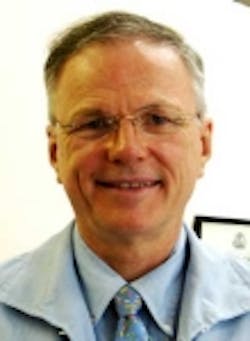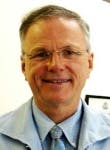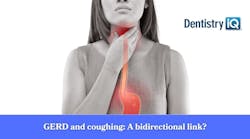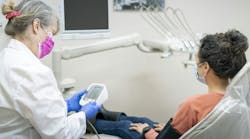Kinesiology and dentistry
By Raymond G. Hatland, DDS
One of the most important discoveries and arguably the most important discovery made in the 1960s that has profoundly affected the growth of alternative and holistic professional health care worldwide is that touching various weaknesses in the body can make any muscle weaker. Also, if the area or point of the weakness is corrected or strengthened, the same test will make that same muscle stronger. This way of testing has many names: energy testing, muscle testing, contact energy testing, or kinesiology. Whatever the name of the system, kinesiology has had a profoundly positive effect on my personal and professional life. It would be difficult for me to practice dentistry and safely help my patients the way I want to without its aid.
Over the last four decades, all types of health-care professionals have used various forms of kinesiology or contact reflex muscle testing. The first form, applied kinesiology, was discovered, developed, and taught for more than 40 years by the brilliant Dr. George Goodheart, DC. Because of his discovery and large body of research, many consider him to be the pioneer grandfather of the modern holistic and alternative health-care movement that has grown into a multibillion-dollar industry. Having an objective way to test fluctuations in our body’s subtle energy system is a tremendous help for professionals like myself not only to determine what weaknesses exist in the body, but also the effect of the materials or supplements I use and the treatments I perform for my patients.
Just as the circulatory system provides critical oxygen and nutrition to the cells, the fiber-rich meridians provide critical energy in the form of electrons to the cells. The electrons help our cells maintain the critical pH needed for the biochemical reactions of life to take place. Without these electrons, the cells will lose their ability to function and fight disease, and eventually die.
In the hands of a well-trained professional, many mysterious conditions can be unraveled and, therefore, treated rationally with biologically friendly treatment regimens. There are many kinesiology and energy-based systems that have worked and stood the test of time by other professionals. Because of my own fascination and success with kinesiology over the years, I have studied and use parts of many systems. “Dental Kinesiology” by George Eversaul, PhD; “Behavioral Kinesiology” by John Diamond, MD; “Contact Reflex Analysis” by Dick Versendal, DC; “Chinese Energetic Method: by the Qigong Master Kam Yuen, DC; and James Tennant, MD, and others have all made extremely valuable contributions of knowledge and insights into understanding how to stay healthy and treat disease conditions through kinesiological testing. Sophisticated computer programs have made energy testing much more thorough and sensitive. Every system in the body can be tested so that many secret causes, even from the past, can be revealed. Many of these programs have recommendations for the best possible remedies accompany them.
In clinical dentistry, energy testing using muscle testing techniques can be a valuable aid to diagnoses, and a way to discover how dentistry affects other areas of the body or the whole body in general. Most of the time, stresses in the energy system can be determined within seconds or minutes. This helps the dentist to confirm or clarify other conventional examination findings, signs, symptoms, and tests. Kinesiological testing results should make sense. It should never be the only test on which a dental diagnosis and treatment is based. Energy testing can guide the holistic dentist and patient into making the safest, most effective, and biologically friendly course of action that is needed for correcting, curing, or healing almost any health issue.
In my practice, it takes only a few seconds to test the effect that the occlusion can have on my patient’s stress or tension levels in his or her head, neck, or back. For example, I simply muscle test the patient in the clear with his or her lips together and teeth apart. Then, I have the patient close together fully and test the same muscle again. If the muscle tests weaker, then the bite is causing tension or stressing the patient’s neuromuscular system. The more dramatic the weakness is in the test, the greater the impact on other areas of the body. This test does not test the effect of the bite on the muscles of mastication, rather how the bite causes other muscles to tense, in turn causing imbalances in other parts of the body — especially the spine. Basically, the more tension we have in our body, the more the flow of electrons in the energy system is suppressed.
If the patient’s bite is properly corrected at least close to an ideal jaw relationship, or if there is a properly made occlusal appliance (again with close-to-an-ideal jaw relationship), the patient’s bite will muscle test stronger than in the clear, thus making it a therapeutic, life-energy enhancing, and muscle-relaxing bite for the patient.
Through the use of kinesiology testing, a dentist can quickly determine that a certain material was incompatible with the patient’s physiology just by having the patient hold the material in his or her hand and muscle testing to see if a strong muscle will go a weak. This type of testing is simple, fast, and quite impressive for most patients. It also demonstrates to the patient that you’re willing to conduct some tests to see if what a book says or a professional’s opinion really applies. Any dentist can do this, but it requires confidence. Being trained by someone who knows how to do it already will keep you from making beginner mistakes.
Tell your patients to ask these questions if they are looking for a holistic dentist:
- Has the dentist been trained in any kinesiology techniques or systems?
- How does the dentist utilize his or her knowledge of the energy system in his or her practice?
- Does the dentist recognize the importance of the energy system in maintaining health and vitality throughout the body?



